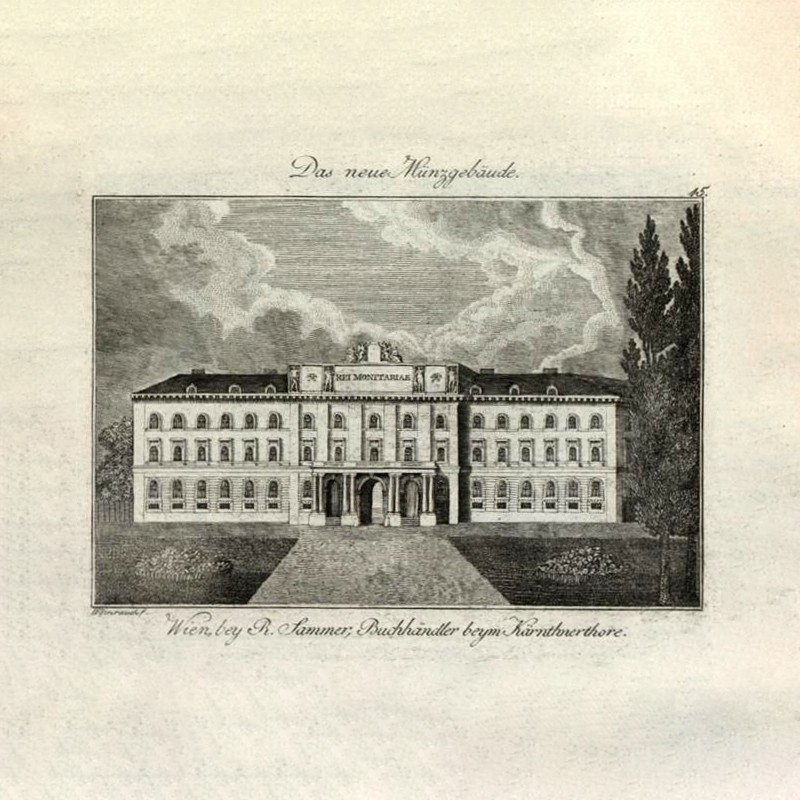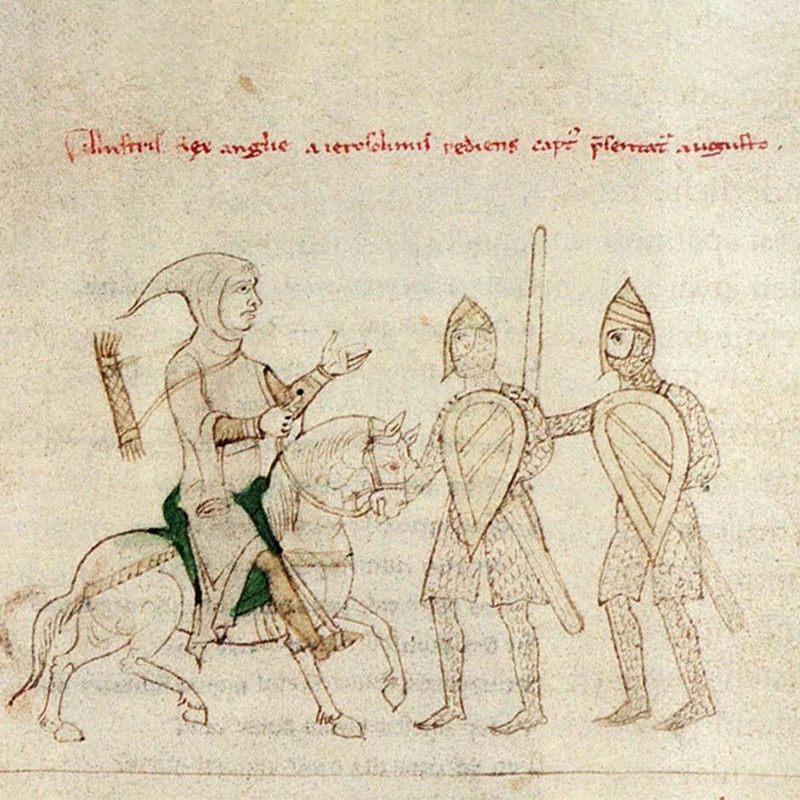The Mint building in Heumarkt, completed in 1838, has remained the home of Münze Österreich AG to this day.
When, in 1194, Richard the Lionheart paid 12 tonnes of silver to Duke Leopold V of Austria not only did he secure his freedom from a year of incarceration, he also unwittingly laid the foundations of the Austrian Mint.
As was the rather brutal custom of the day, having been previously insulted by King Richard I, Duke Leopold captured and imprisoned the English monarch near Vienna when he was returning overland to England from the Crusades. Duke Leopold decided to strike coins from his booty and in so doing set in motion more than 800 illustrious years of minting history in Vienna.
It was not for another 200 years, however, that the Vienna Mint was first mentioned in historical documents. Originally situated near Hoher Markt, then in the Wollzeile and later in Prince Eugene’s winter palace in Himmelpfortgasse, since the first half of the 19th century the Mint has been at its magnificent home in Heumarkt, central Vienna, where coins are still struck to this day.
In the last 825 years, many different minting methods have been employed there. Up to the 16th century the minting hammer was used for striking coins. The roller press, rocker press and screw press followed, while ring striking, which produces an even round shape, has been in use since c. 1830. It basically still is today, although up to 750 coins per minute can now be minted by its modern manifestation.
Right from the outset the expert craftsmanship of the Vienna Mint also played a vital role in the production of prestigious and timeless coins of the very highest standard. The engraving academy has been in existence since 1733 in Vienna and miniature works of art are still being created by its highly gifted and experienced designers.
Indeed, the Austrian Mint is especially proud of the loyalty of its long-serving staff, for whom coins are a passion not merely a means of earning a living.
Over the years, mints were established and coins struck throughout Austria in towns and cities such as Graz, Krems, Salzburg, Innsbruck and Villach. However, with the formation of the Republic of Austria in 1918, the Vienna Principal Mint became the country’s one and only mint and remains so today. In 1989 its name was officially changed to the Austrian Mint and it became a subsidiary of the Austrian National Bank.
One of the Austrian Mint’s most internationally recognised coins is the Maria Theresa Taler. Originating in 1780, the year Empress Maria Theresa died, today the Maria Theresa Taler is not only the most famous silver coin in the world but also boasts the greatest number minted. Such international successes have made the Mint something of an ambassador for Austria, another prime example being the world famous golden Vienna Philharmonic coin. One of the most popular gold bullion coins worldwide, it has played a vital role in the development of the Austrian Mint into a highly successful company.
Today the Austrian Mint is a global player in the business of supplying means of payment. Its beautifully crafted coins minted in the very heart of Vienna are highly sought after by investors and collectors all over the world, as well as by those simply looking for a worthy and suitable gift for a loved one.


The Vienna Mint is established at the Babenberg Court upon payment of the first part of the ransom paid for the release of Richard the Lionheart of England.
It is no longer known exactly where the Mint was originally located. However, during the celebration of the 800th Anniversary of the Vienna Mint in 1994 a commemorative plaque was erected on the spot where historians believe the original Mint stood in Am Hof.
Due to lack of space, the Vienna Mint has to move again and again. The first written mention of the Mint being located in Wollzeile in central Vienna dates from 1371. The Mint remains there for four centuries, during which its employees miraculously manage to survive the plague by bricking up the windows and doors of the building.
The first attempts to introduce the roller press, and with it the advent of industrial coin production, is a failure in Vienna because of the lack of water power. In Hall in Tyrol and other Mints, this new minting method is successfully introduced, however. So revolutionary is this new technique that craftsmen from the Tyrol even build a roller press for coin makers as far afield as Segovia in Spain.
The lack of water power in Vienna does not deter the Mint from introducing new technology capable of industrializing the coin-making process: it adopts the rocker press in 1650. This method uses two semicircular dies simultaneously pressed to either side of a metal strip. A characteristic of this method is that the coins it produces are never perfectly spherical.
The screw press is introduced from France circa 1700. It catches on rapidly because of its ability to produce perfect coin motifs. It does this by means of a rotating screw that converts the rotation of the handle into a downward movement.
The engraving academy is established in Vienna.
The Mint relocates to the former winter palace of Prince Eugene, in Himmelpfortgasse.
The first Maria Theresa Taler is minted in the year of the Empress’s death.
The Mint orders two lever presses.
The construction of the Mint’s current home in Heumarkt, which was commissioned by Emperor Francis I, takes place in 1835-1837.
After the end of the monarchy the Vienna Principal Mint becomes the sole Mint of Austria.
Austrian Mint PLC emerges from the Principal Mint as a subsidiary of the Austrian National Bank.
The very first Vienna Philharmonic gold bullion coin (one ounce fine gold) is issued in October 1989.
Three years after its launch, the Vienna Philharmonic becomes the world’s bestselling investment coin.
The Austrian Mint becomes the world’s first to strike a silver niobium coin.
In February 2008, the first ever European silver bullion coin enters the market – the Vienna Philharmonic one ounce fine silver.
In February 2016, the Austrian Mint issues the first Vienna Philharmonic in platinum (fineness 999.5).
The Austrian Mint celebrates its 825th anniversary in 2019. Innovations such as the convex ‘50th anniversary of the Moon Landing’ coin enhance the coin market.